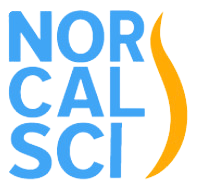SEARCH FOR SCI CURE: important clinical trial targeting chronic complete injuries to start in U.S.
Dr. Wise Young
The W. M. Keck Center for Collaborative Neuroscience at Rutgers University-New Brunswick today announced that the FDA has approved the first U.S. clinical trial for an experimental treatment for the most severe forms of spinal cord injury. The treatment does not cure paralysis but is the first to help people with complete chronic spinal cord injuries to regain some ability to walk.
NorCal SCI co-founder, Franklin Elieh, has been following the work of the researcher behind this work, Dr. Wise Young, for many years. “This news is as exciting as it gets, particularly because it is designed for those with long-term, high-level complete injuries. Very few clinical trials are aimed at this population,” said Franklin, himself a C6 complete injury from 1989.
It includes doses of umbilical cord mononuclear blood stem cells and lithium, coupled with intensive physical therapy, which stimulates severed spinal cord nerve fibers to regenerate. The treatment was first tested in a Rutgers-led trials from 2009-2014 in Hong Kong and China, where 15 of 20 participants walked with a wheeled walking frame and 60 percent recovered some bowel and bladder control. The study appeared in the journal Cell Transplantation in 2016. “We don’t have a cure but a very promising and unprecedented therapy,” said Wise Young, the founding director of the Keck Center and the Richard H. Shindell Chair in Neuroscience at Rutgers. “We aren’t returning people back to their pre-injury state, but this is the first therapy to restore significant function in these patients.”
TO APPLY FOR ENROLLMENT IN THIS CLINICAL TRIAL: The FDA has granted approval for this clinical trial, and later this year, they will begin a trial with 27 subjects. In order to qualify for this trial, you must have a complete injury between C5 and T11, be injured more than 1 year, 18-64 yrs old. Neurosurgeons are reluctant to inject above C5 because of the phrenic nucleus which if damaged, it could result in diaphragm paralysis preventing the individual from being able to regulate breathing on his or her own. Dr Young plans to have a separate trial for high quads after this one. There is no cost to participate in a clinical trial, but if selected, you would have to cover the cost of lodging and transportation in NJ for 6 months. Send e-mail to Jim Bennett who will add you to his list to be alerted when recruitment begins in a month or two. jimbenn@rutgers.edu
An estimated 3 million people worldwide have chronic spinal cord injuries, 36 percent of which are “complete injuries”, meaning that the patients have some level below which they have no motor or sensory function. The remainder are partially paralyzed with incomplete spinal cord injuries in which some function may be present below the injury level.
“This promising new therapy illustrates the academic excellence, compassion and entrepreneurial spirit that Rutgers researchers bring to the challenges facing humanity today,” said Deba Dutta, chancellor of Rutgers University-New Brunswick. StemCyte, an umbilical cord stem cell blood bank in Baldwin Park, Calif., is investing over $5 million to sponsor the U.S. trial. The company, where Young is the global medical director, also plans to sponsor clinical trials in India, Taiwan, Norway and other nations. The U.S. trial will last three years and be conducted at Rutgers’ New Jersey Medical School in Newark, Hackensack Meridian Health in Hackensack, N.J., Meridian Jersey Shore, and Robert Wood Johnson Medical School.
The randomized study will include 27 participants divided into three groups: one group will receive physical therapy; one group will receive stem cells and physical therapy: and one group will receive stem cells, lithium and physical therapy, which is the treatment used in the Hong Kong and China trials. The treatment involves injecting 6.4 million umbilical cord blood mononuclear stem cells into the spinal cord and intensive physical therapy for six hours a day, six days a week for six months. Umbilical cord blood is a rich source of stem cells. A third of the patients will receive a 6-week course of oral lithium carbonate. The umbilical cord blood mononuclear cells include most of the stem cells and monocytes. These cells release growth factors that stimulate regeneration in the spinal cord. Lithium should help stimulate the regeneration.
The Hong Kong and China trials included 28 participants with complete spinal cord injuries. All the participants received the stem cells, but only 20 also received intensive walking training. The results showed:
• Transplantation of umbilical cord blood mononuclear cells into the spinal cord is safe.
• 75 percent (15 out of 20) of the participants who received stem cells and physical therapy recovered the ability to walk using a walking frame, including 35 percent with no assistance from therapists and 40 percent with minimal assistance from therapists.
• Over half of the participants recovered some bowel and bladder function.
The trials are part of a decades-long global effort led by Young, the W. M. Keck Center for Collaborative Neuroscience, StemCyte ChinaSCINet, the Hong Kong SCI Fund, and other local and international partners to cure paralysis and improve the quality of life and independence for people with spinal cord injuries. Established in 1977 as part of Rutgers commitment to advancements in neuroscience, the W. M. Keck Center (keck.rutgers.edu) is a global leader in spinal cord injury research dedicated to multidisciplinary collaborative research and to accelerating the translation of scientific discoveries into effective human therapies.

